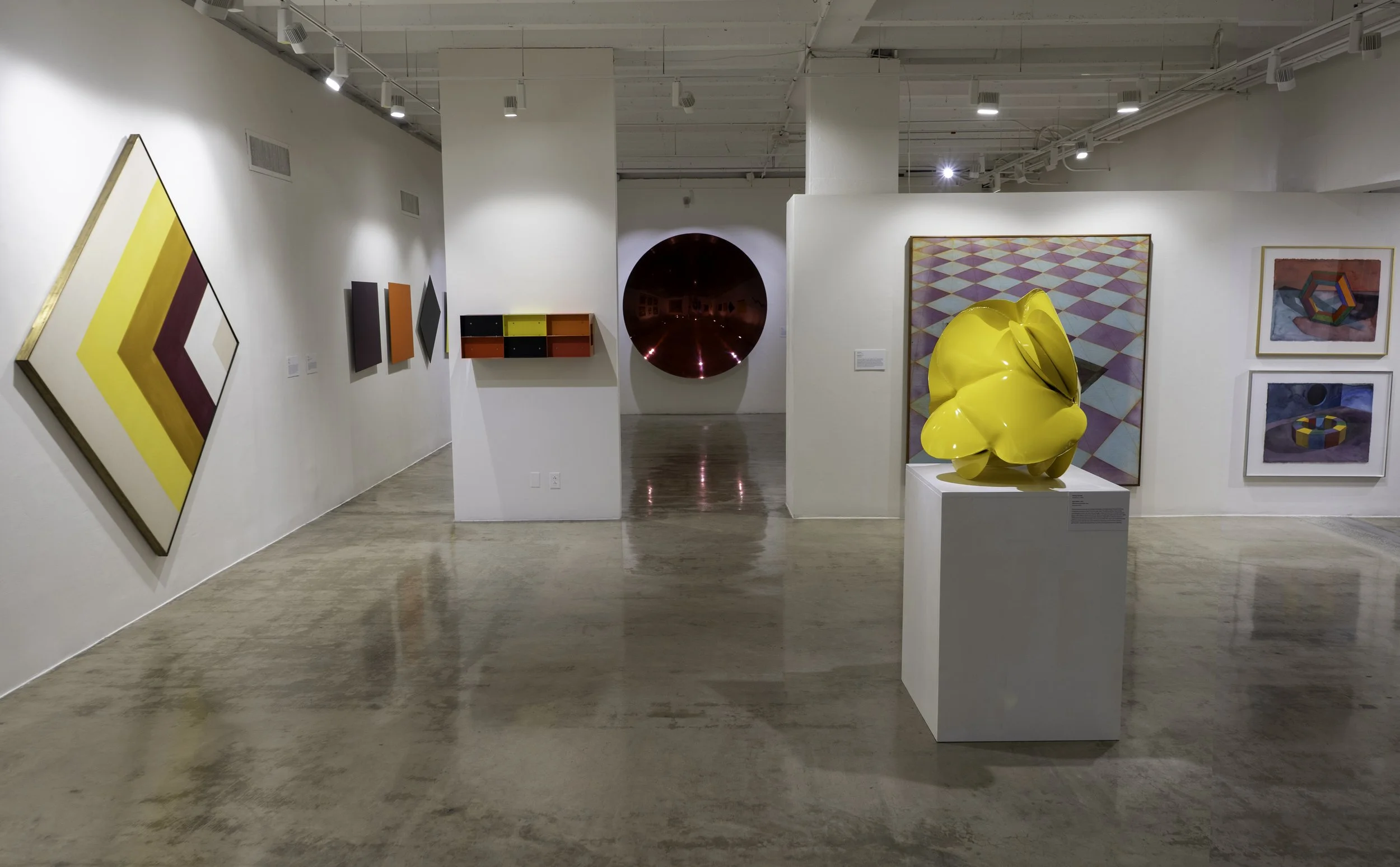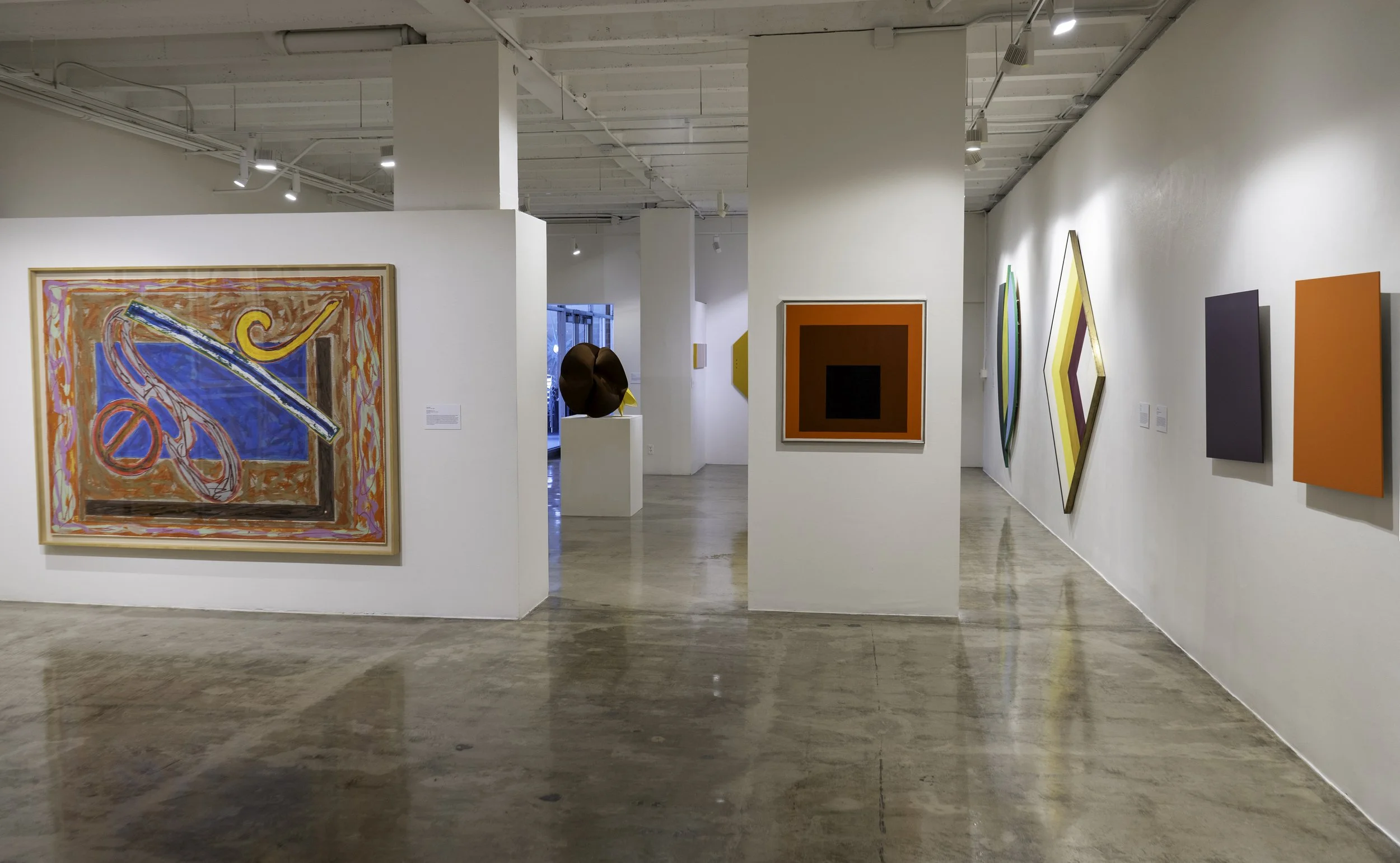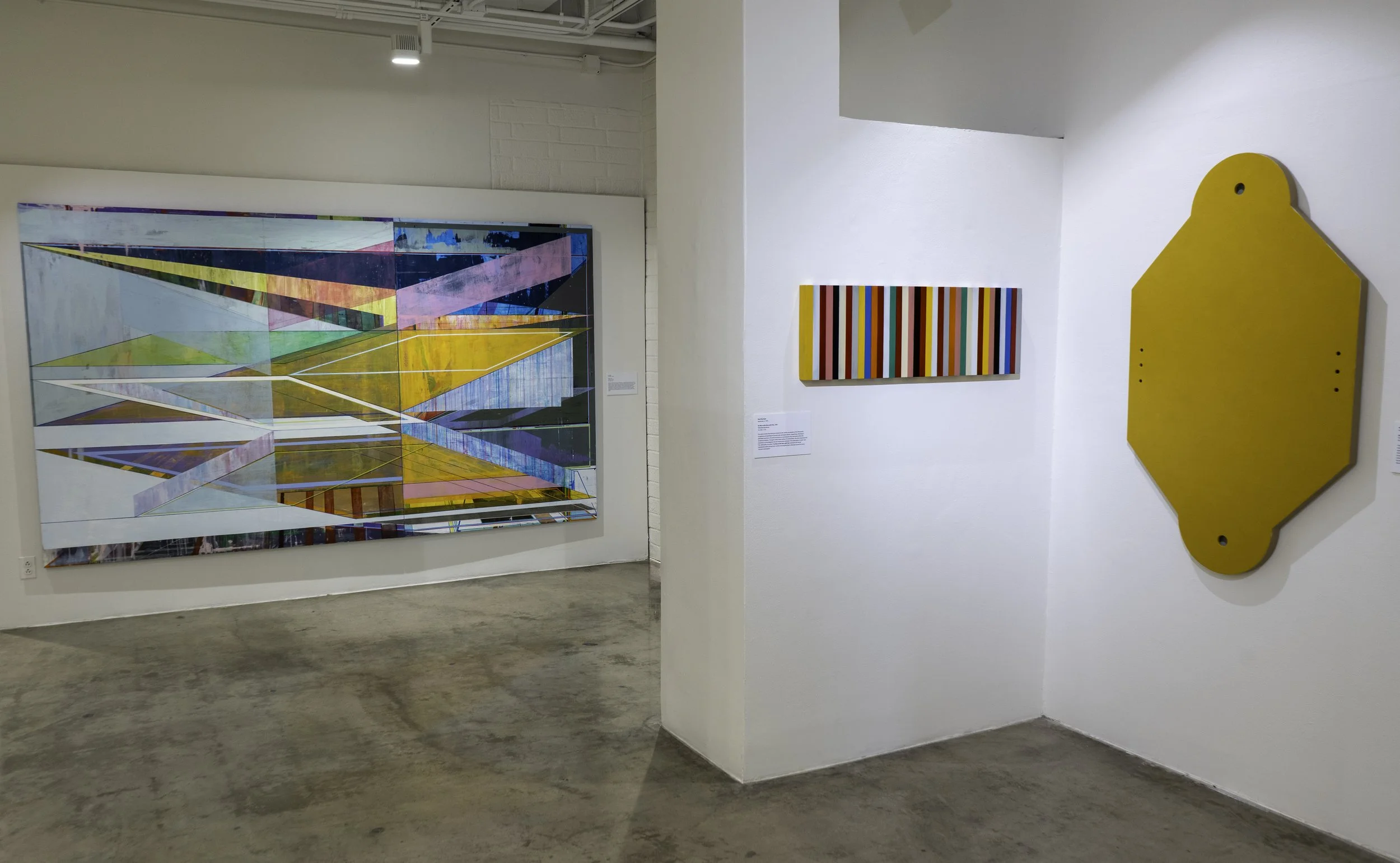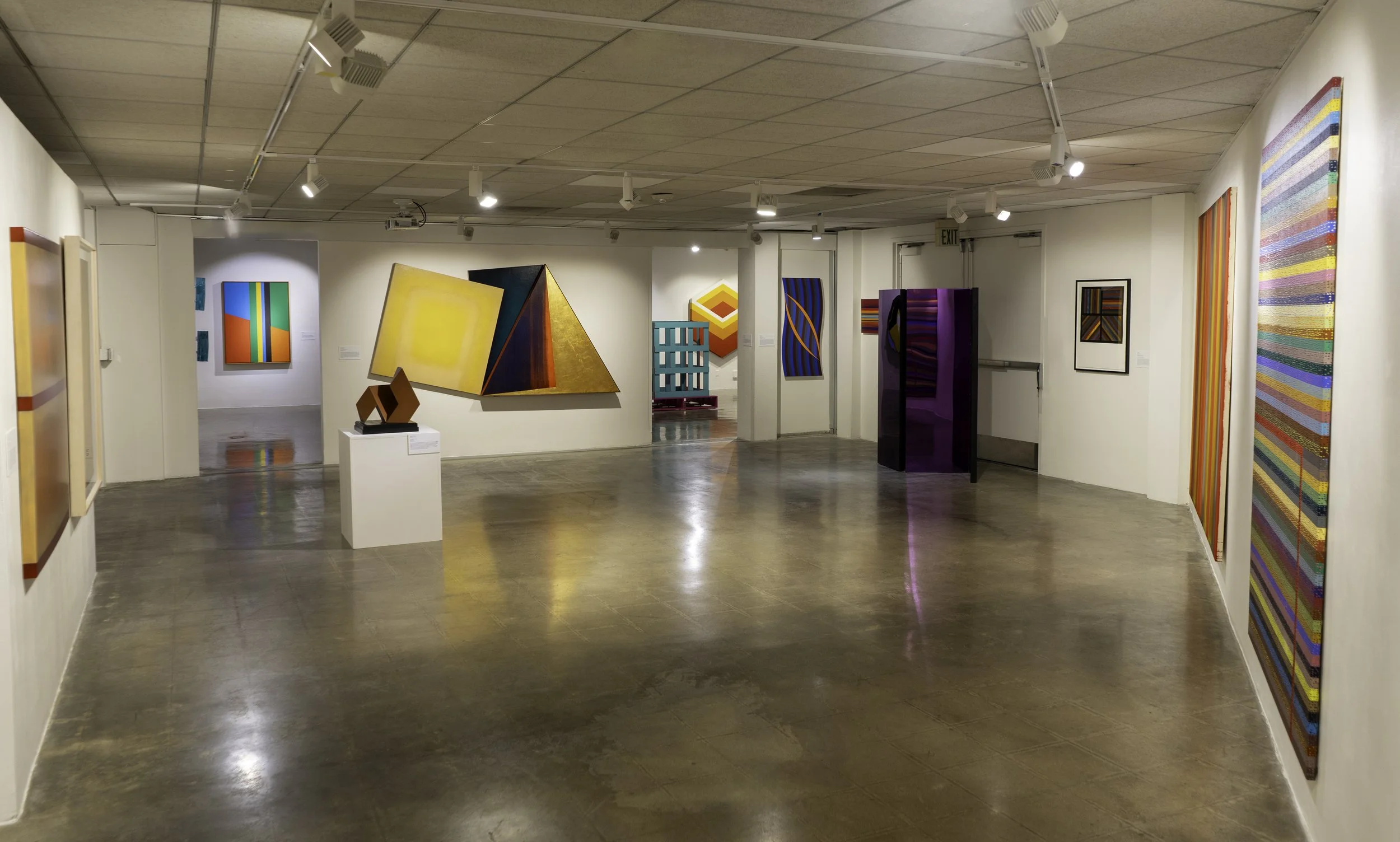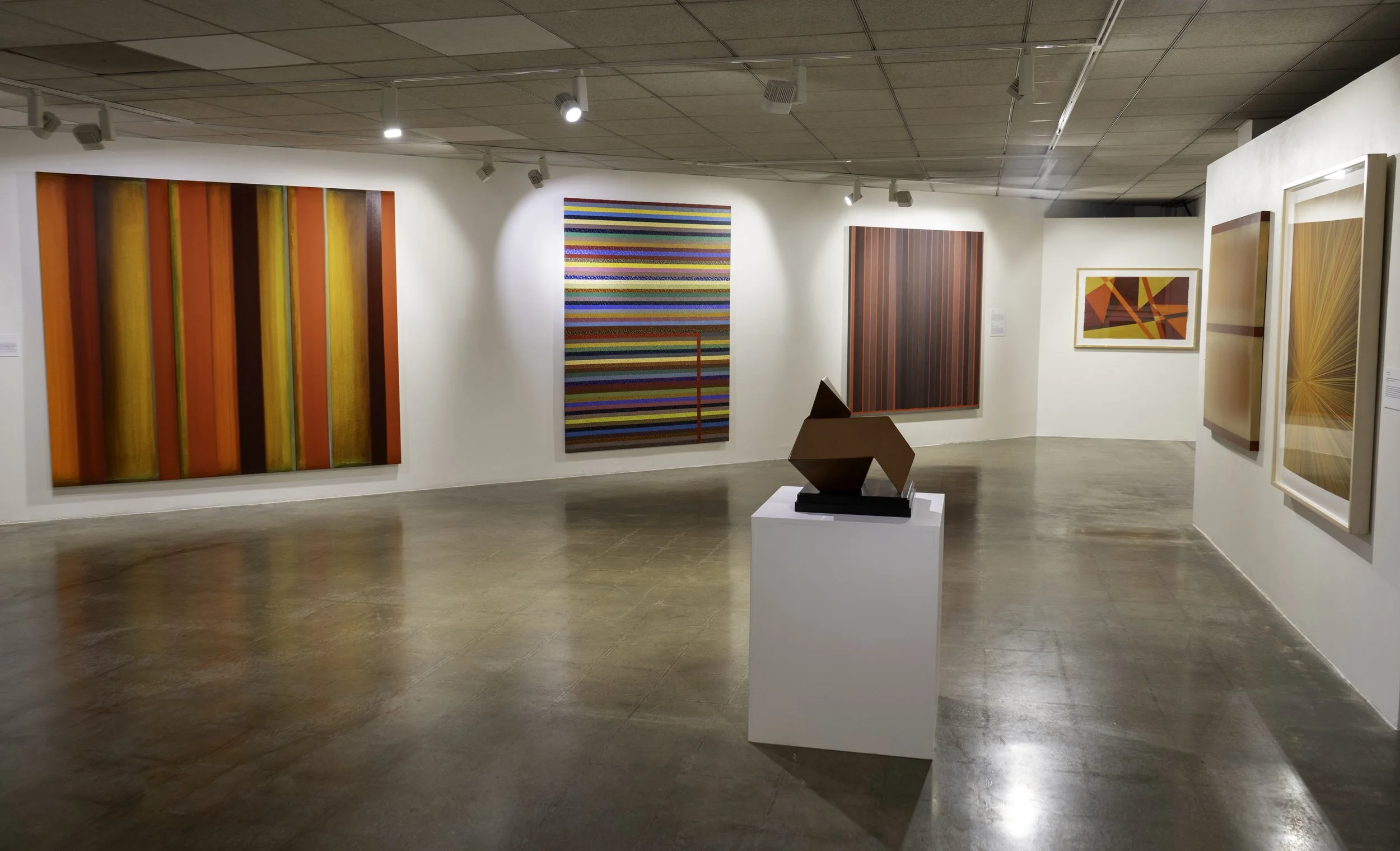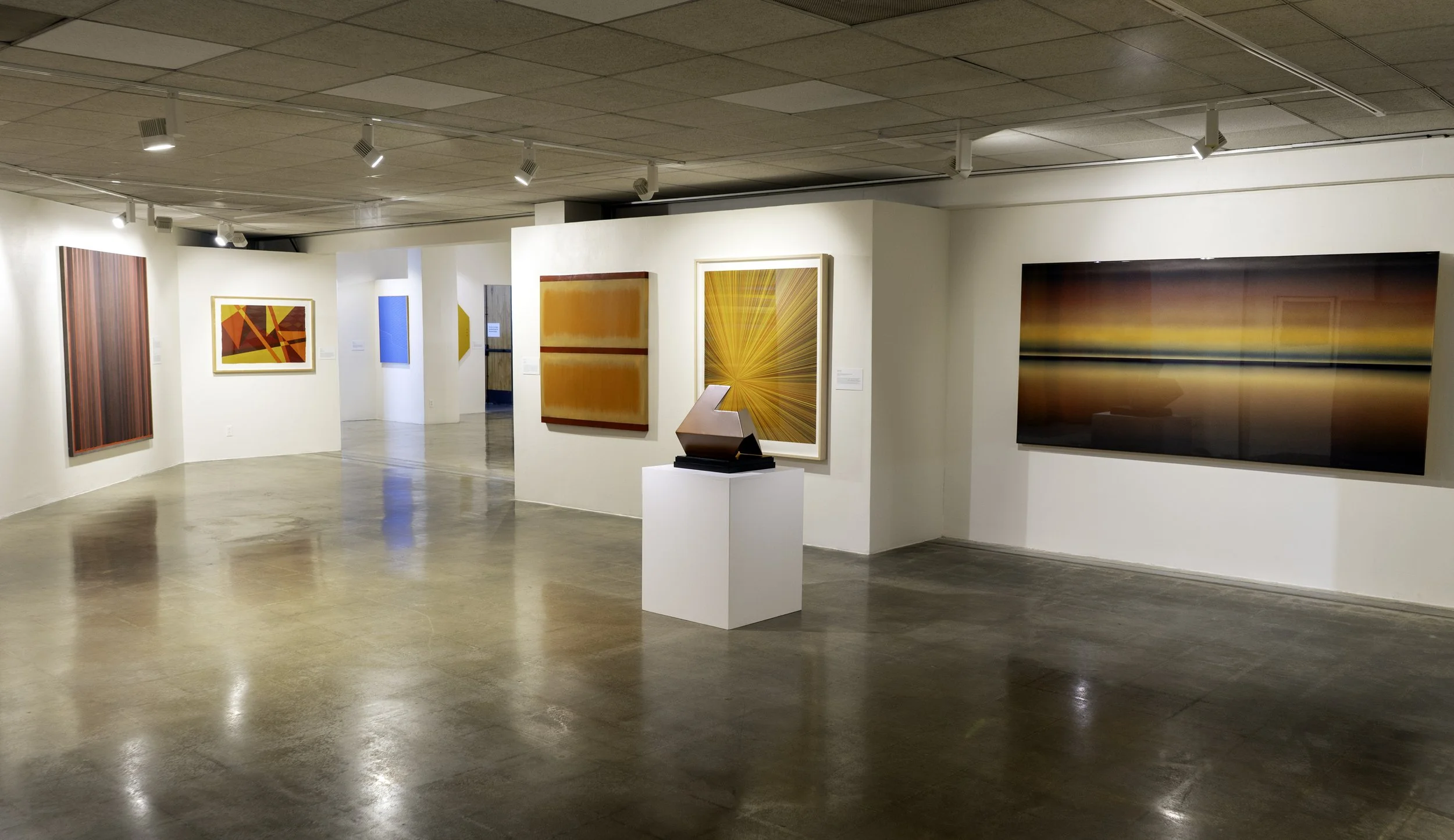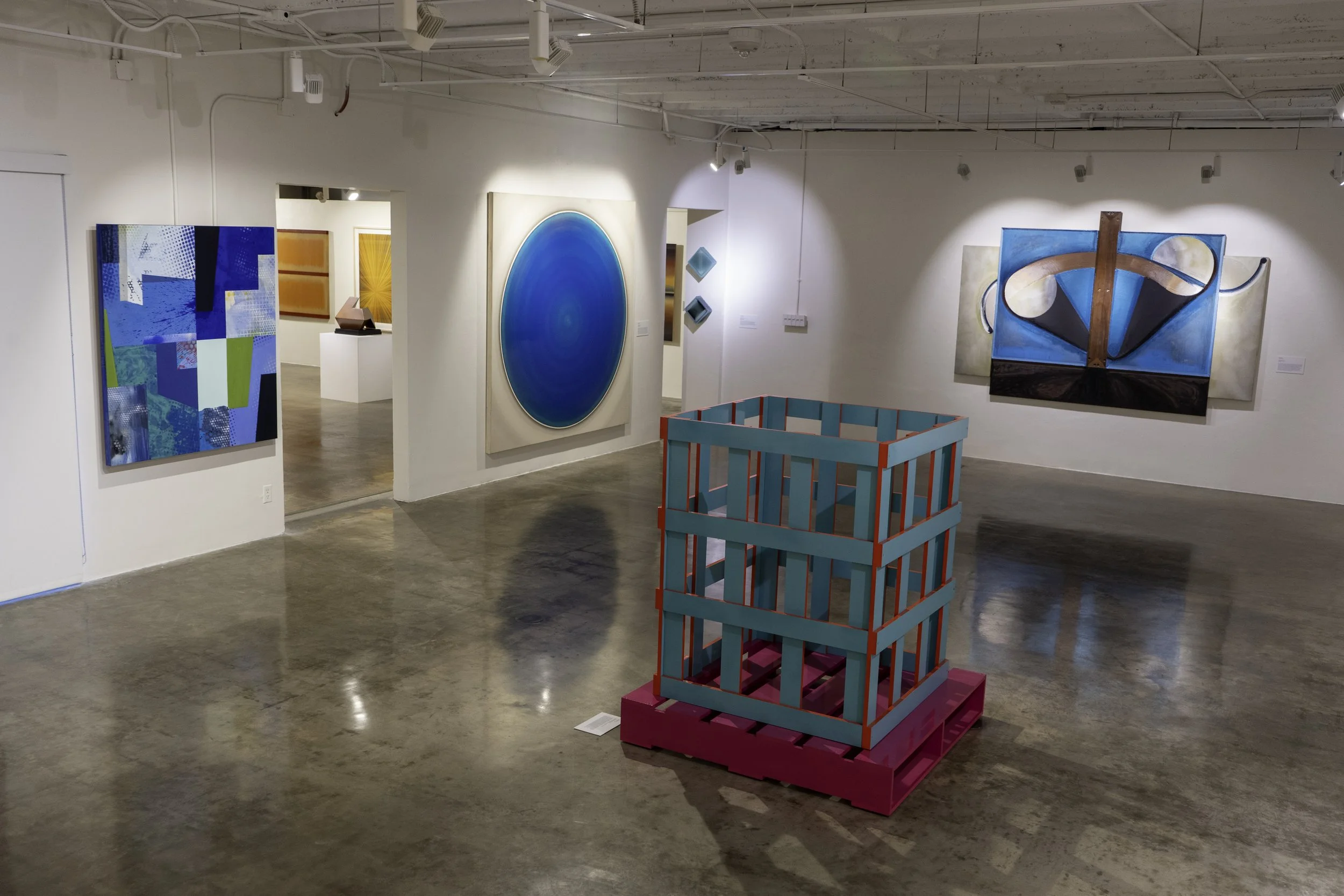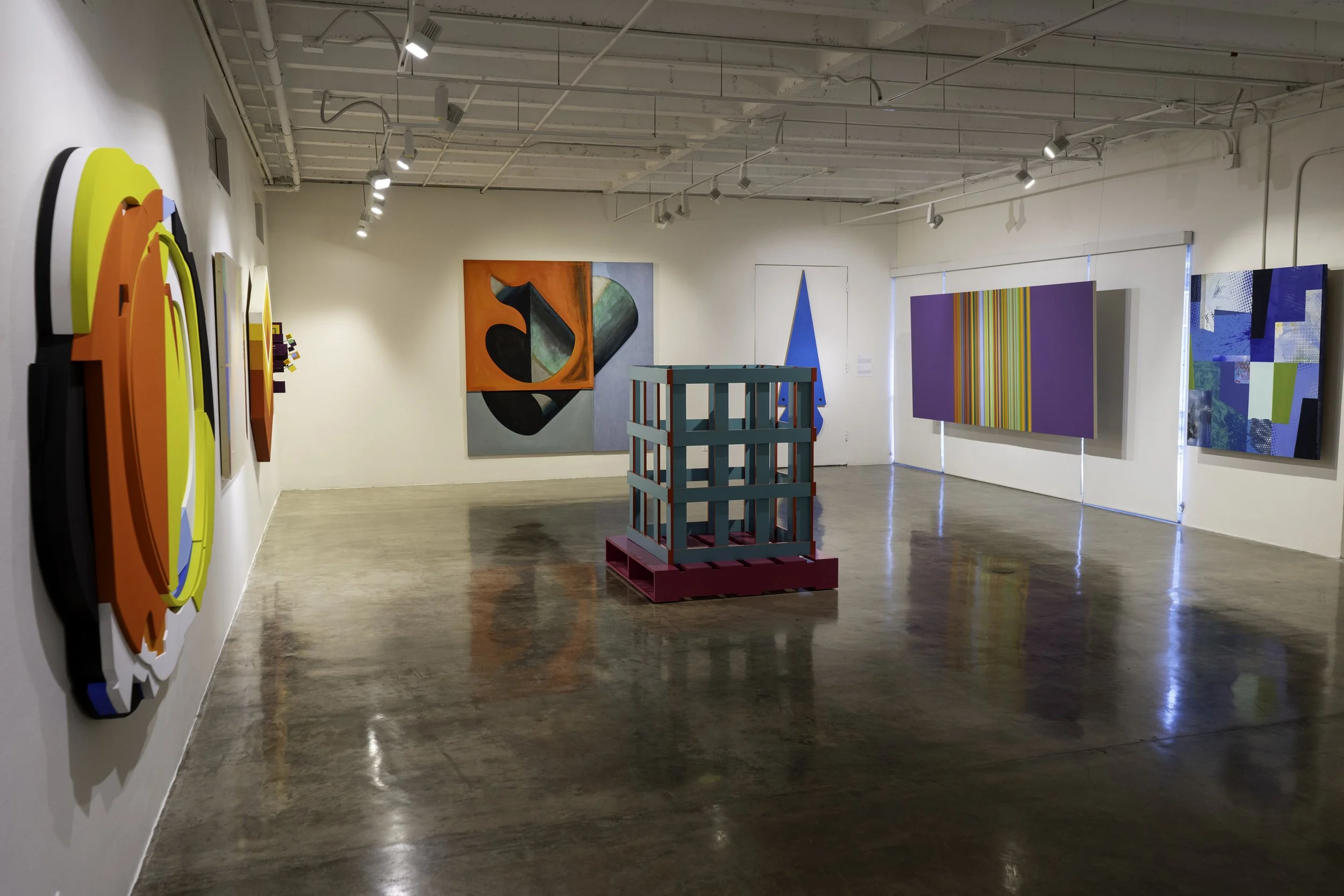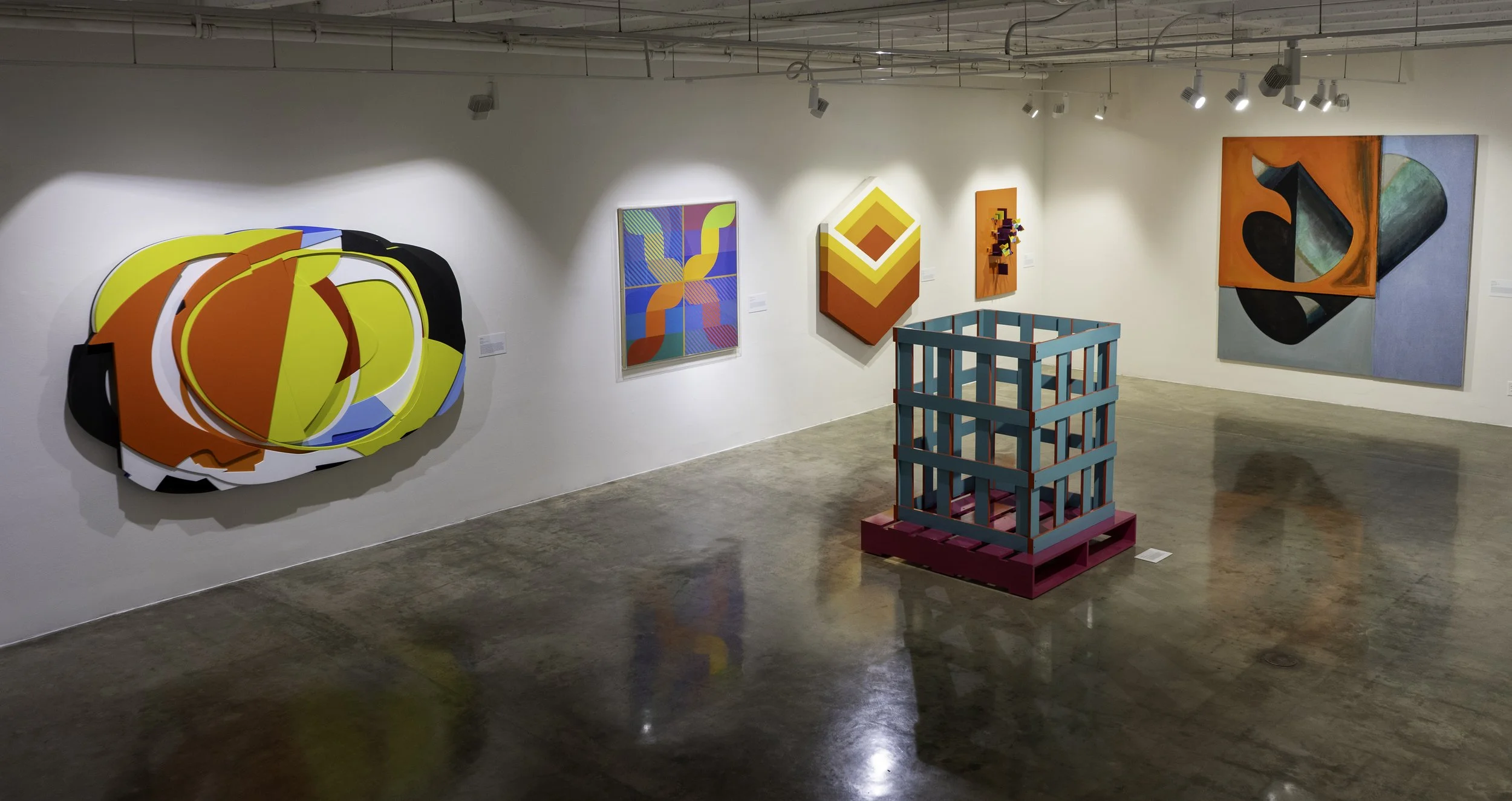“BACK TO BASICS: Contemporary Art from Frederick R. Weisman Art Foundation”
Curated by Billie Milam Weisman
& Collaborated with Ronald H. Silverman Fine Arts Gallery
May 27 – July 28, 2024
Foreword by Mika M. Cho
Presenting The story of modern Western art since the 1940s may be encapsulated and abridged as the ascendency of the ontology of the self or the expression of pure feelings as exemplified by the abstract expressionists, followed by a view of the quotidian context seen in the Pop arts, along with the expressions labeled as the geometry of the mind that has been categorized as the hard-Edge, Color-Field, or the Minimalist art. These movements preceded postmodernism, whose focus was primarily on the relation between truth and language.
This exhibit, “Back to Basics,” on Minimalism, Color-Field, Hard-Edge, Light and Space, and Conceptualism, is personified by a number of phenomenal artists whose work reflects the very soul and psyche of America in the post-war years. A few, in this exhibit, span the transition from abstract expressionism into Color-field and minimalism as typified.
The works of Ellsworth Kelly, Josef Albers, Paul Gadegaard, Kenneth Noland, and S. Byrne offer a unified, pure, and universal vision of the mind, though spanned across many decades. The integrity of uniformity and the power of singularity elevates these works to masterpieces. Here, all elements and dualities are reduced to a singularity and transcend above and beyond history, culture, and rhetoric. On the other hand, the expressions of Frank Stella, Ronald Davis, Dorothea Rockburne, and Arthur Silverman acknowledge the multiplicity of the primary constituent unit, alluding to the layering of space and time by their concentric designs, parallel arrangements, and fused forms. The fused designs are best seen in the works of Tim Ebner, Tim Bavington, Ned Evans, Casper Brindle, Andy Moses, and Kevin Reinhart. The recognition of multiple layers across time and the fusion of forms anticipates certain features of postmodernism and ultimately conveys the complexity that is inherent in the pure and straightforward geometry and colors as embodied.
This Exhibition,” Back to Basics,” deals with the geometry of the mind in the entropy of nature—such constructions as circles, spheres, squares, and lines—shown generally in primary or monochromatic color, evoke a sense of being within the psyche and transcendent of nature. Elemental shapes convey the immensity of man’s feelings and his limits in a vast and incomprehensible universe. Back to Basics is the simple evolution of universal artistic sensibility through the essential exploration of color, medium, and space.
What turns out to be fascinating about this Exhibition is that the geometry of the mind or the patterned constructs of its outlooks turn out to be, after scrutiny, just as complex, discursive, and unraveled as the works of the Abstract Expressionists which the Minimalist had attempted to overcome and exceed beyond as they had envisioned simplicity to be universality, centrality and the constituent element of being and thought. Thus, on the whole, while all of these works relate to signs (semiosis), they can also be understood as symbols (metaphors) of their time and place.
Leonardo da Vinci once said, “Simplicity is the ultimate sophistication!”
